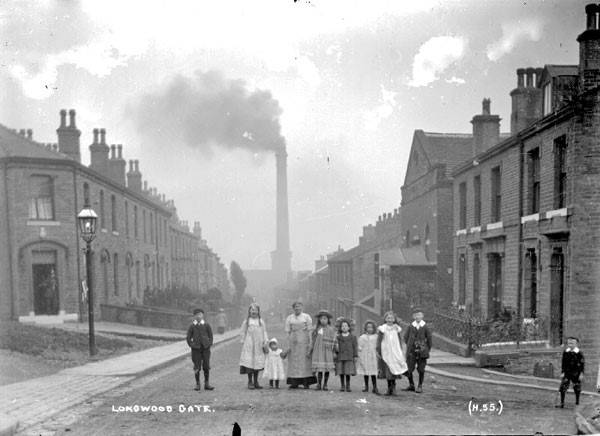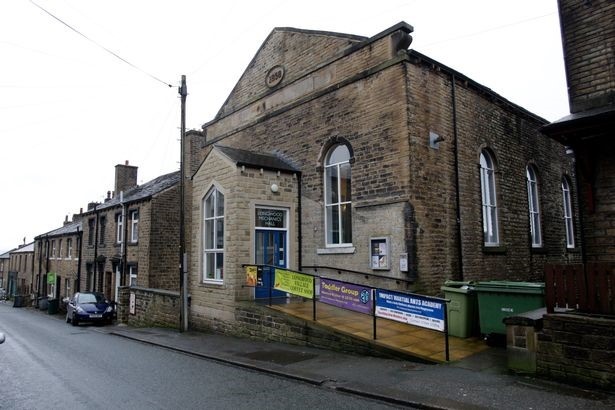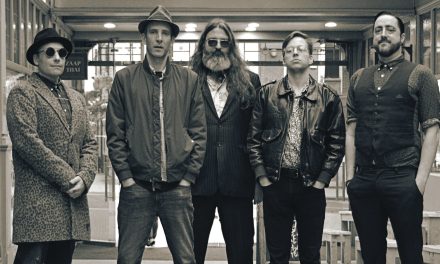Nestling in a narrow Victorian road off Longwood village stands the Mechanics Hall. Erected in 1858 among tiny terrace houses and towering mills, it has served and remained a focus of the community for more than 160 years.
In the industrial areas where working hours were long and wages were low, the 1840s and 1850s witnessed a mushrooming of Mechanics Institutes.
Their main function was to provide a technical education for people in industry. They also met the needs of adult education and allowed ambitious workers to gain qualifications, technical and otherwise.
Lindley and Milnsbridge led the way but Longwood, with its growing population of two and a half thousand, did not want to be left behind.
It all began when a group of young professional men met at a Huddersfield Temperance Coffee House for lessons and self-improvement lectures.
Later, they named themselves the Young Men’s Improvement Society. In 1843 they changed their name again to Longwood Mechanics Institute.
Numbers continued to grow but the Mechanics Institute had no building of its own. They had to meet at the Baptist Meeting House at Longwood Gate.
As time went on, the Baptist Schoolroom became cramped. When costs of hiring the schoolroom rose, the Mechanics Institute joined with members of the Newsroom, which met lower down on Longwood Gate.
Together, they pressed for a purpose-built Mechanics Hall to be constructed. It would be used by the Mechanics Institute but also have a Newsroom and a Day School. This was very ambitious considering only larger towns had such halls. Huddersfield did not build its own Mechanics Hall until 1861.

In June 1857, a public meeting, summoned by a bellman, was held at the Baptist Schoolroom to attract fundraisers and subscribers.
Public subscriptions were collected from people of all walks of life from mill owners to farmers and more. Land was leased cheaply from Sir Joseph Radcliffe, one of the main landowners of the area. The ambitious project was up and running.
The foundation stone was laid in September 1857 by Rev Enoch Miller from Halifax Square Chapel. A time capsule, containing newspapers of the day, was buried as the foundations were laid.
The Band of Ancient Order of Foresters led a procession from the bottom of the valley to the hall site. Mill owners were asked to stop their works while the foundation stone was laid.
Luncheon was then held at the Baptist Schoolroom, which could accommodate 300 people. This was a great day for Longwood.
Yet from the start a major scandal and dispute threatened the building of the Mechanics Hall. James Quarmby had been awarded the building contract.
In April 1858 he was sent to York Castle for bankruptcy. At one time, he was charging the Trustees for either work he had not completed or for building materials he never provided.
The building committee were forced to send two carts to Quarry Hill to bring stone to the Mechanics Hall site. The stone had already been paid for but not delivered by Mr Quarmby. He was replaced by Abel Schofield who finished the contract.
Finally, in October 1858, Longwood residents witnessed the opening of the hall amongst great celebrations.
There was a formal opening followed by a public tea and concert in the evening. It had cost £600 with a loan of £150 from the Ancient Order of Foresters Friendly Society. The total spend was finally paid off in 1882.
The building was mainly on two levels. The upper level was used by the public as a meeting and reading room.
Beneath the upper level was the school room for the children of mill workers. Two cottages for the head teacher and caretaker were incorporated into the school room at the back of the building.
However, the school only functioned for a decade and a half. The Education Act of 1870 meant a better provision for elementary education had to be provided for Longwood.
By the 1870s a school (Spark Hall) was established and another (Goitfield) by 1884. All pupils and staff from the Mechanics Hall’s Day School now attended these schools.

Committee meeting records held by West Yorkshire Archive Service reveal much about the early life of the Mechanics Hall.
Christian meetings were encouraged but did not include Catholics. Atheists were not welcome. Lectures of a moral and uplifting tone were held on the dangers of drink and the need for better wages. These attracted large audiences.
No dancing, drinking or gambling was allowed. Balls and theatrical entertainment were frowned upon at first. Lectures were very popular. These ranged from urgent matters of the day like the Disestablishment of the Church of England to animal husbandry.
As time passed a wide variety of activities took place. Penny readings (where a penny was the entrance fee) of popular books like those of Charles Dickens proved to be popular. Often, they were supported by the ever popular choir of St Mark’s on a Saturday night.
By the 1890s the Mechanics Hall adapted to meet the growing political, social and economic needs of Longwood.
Political meetings were being held and included meetings to select the Labour candidate for Huddersfield.
A Penny Bank ran from the hall for over 20 years. Between 5pm and 7.30pm on Saturday evenings members could deposit money via a hatch-way in the wall (it sometimes took as much as £200 a week).
Today, the hatchway is still there, in the downstairs dance studio, where a teller once collected hard-earned money from Longwood’s millworkers for the Savings Bank.
The Mechanics Institute continued to adapt to the changing times of the 1900s. Gang shows, men’s pantomimes, dances and concerts were often held. Most popular were music hall and variety hall acts. At times they were so overcrowded that audience members fainted.
Longwood residents often had their wedding receptions and funeral teas at the hall. A ‘Darby and Joan’ Club ran for many years.
A bowling green at the back of the hall was well used. Later the Longwood Operatic Society (Longwood Amateurs) proved to be very popular.
Both World Wars have left their mark on the Mechanics Hall. When Joseph Hoyle’s Mill was demolished, its War Memorial Roll of Honour Board (with the names of 192 men who worked for the company and served in WW1) was given to the hall.
It was restored at a cost of £1,000 and was proudly hung in the main hall. During WW2, the hall was used by the Royal Signals after the MoD requisitioned it.
The building even lost its name for a short while. There was an Italian Prisoner of War Camp at Salendine Nook. The MoD didn’t want the prisoners to know the location of their camp, so the lettering from the front of the Mechanics Institute was removed.
From the late 1970s, the building fell into a sad state of disrepair. There were structural problems with the roof and gable. This led to the hall being closed.
Thanks to the hard work of its management teams, the hall was made fit and sound for the 21st century. At the cost of £40,000, the building was re-roofed then a new front porch was built and finally a lift connecting the two floor levels was installed.
To celebrate its 150th anniversary in 2008, the time capsule was uncovered during renovations. By 2018, newspapers found in the capsule were framed and put on display on the staircase. This was a lasting tribute to the hall and its important place in Longwood’s history.
Today, the Mechanics Hall is still serving its community. To quote the words of Esme Shackleton, the great Longwood historian, the Mechanics Hall remains a part of the township’s ‘Living Inheritance.’


















